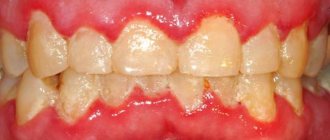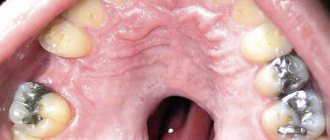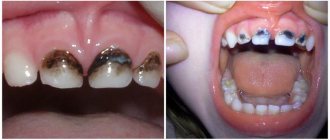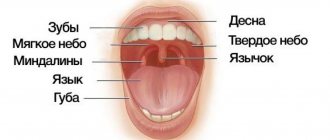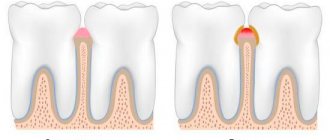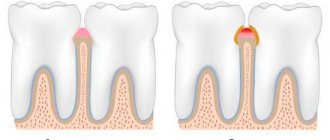"Levomekol" is an antibacterial combination drug for external use with a wide spectrum of action. Levomekol ointment prevents the spread of pathogenic microbes, eliminates swelling, accelerates wound healing, and also increases local skin immunity.
Levomekol for burns
This combination is provided by two active components in the ointment - Chloramphenicol (aka Levomycetin) and Methyluracil. Chloramphenicol is a natural antibiotic that actively blocks intestinal, pseudomonas and staphylococcal bacilli. And methyluracil accelerates the regeneration of the epidermis. The peculiarity of methyluracil is its ability to easily and quickly penetrate into the dermis, without affecting the membrane cell membrane. This process is associated with the removal of excess fluid from the intercellular space, which usually causes swelling and bruising.
What is Levomekol used for?
Levomekol has a multifaceted therapeutic effect:
- quickly reduces the inflammatory process, prevents its spread to healthy tissues;
- prevents the growth and reproduction of bacterial infectious agents;
- quickly eliminates swelling by normalizing microcirculation;
- ensures delivery of nutrients and biologically active substances, as well as molecular oxygen, to the affected tissues;
- stimulates the regeneration of inflammatory cells of all layers of the epidermis;
- increases immunity at the local level.
The ointment quickly removes all inflammatory processes on the skin
It is worth noting that the presence of purulent discharge and necrotic tissue does not prevent Levomekol ointment from performing its function. The drug can be used to disinfect and accelerate tissue regeneration.
Levomekol, ointment for external use, 40 g, 1 pc.
STADA, Russia
Price from 126₽
There are contraindications. Specialist consultation is required.
Medicines for ulcers and gastritis
Therapy for these diseases should be prescribed by a doctor, taking into account the existing symptoms. These pathologies are interrelated, so the drugs for their treatment are similar. Most often, their action is aimed at neutralizing H. Pylori. Tablets prescribed for abdominal pain can be divided into 4 categories.
Antibiotics
Gastroenterologists carefully select antibiotic treatment. It is necessary to compare the risks of side effects and the beneficial effect. Most often, a two-week course of antibiotic therapy is the only way to eradicate H. Pylori.
| CLARITHROMYCIN TAB. P/P/O 250MG No. 14 |
| AMOXICILLIN CAPS. 250MG No. 16 |
| AMOXICILLIN CAPS. 500MG No. 16 |
| AMOXICILLIN TAB. 500MG No. 20 |
| METRONIDAZOLE TAB. 250MG No. 40 |
Proton pump inhibitors
The action of these medications is aimed at blocking the release of bile acid, which accelerates the healing of ulcers.
Do not forget that using inhibitors in large dosages for severe stomach pain is too risky. Leukopenia, nervous disorders, and myalgia are highly likely to develop.
| OMEZ DSR CAPS. MODIF. HIGH 30MG+20MG No. 30 |
| OMEZ CAPS. 20MG No. 30 |
| OMEZ CAPS. K/R 10MG No. 10 |
| OMEZ CAPS. K/R 40MG No. 28 |
| OMEPRAZOLE CAPS. 20MG No. 30 |
| EZOMEPRAZOLE TAB. K/R P/O 20MG No. 28 |
| EZOMEPRAZOLE-SZ CAPS. K/R 40MG No. 28 |
| OMEVEL CAPS. K/R 20MG No. 30 |
H-2 histamine receptor blockers
Their action is aimed at reducing acid production in the stomach. Under the influence of drugs, acid is formed in minimal quantities, which does not allow the ulcer to grow.
| RANITIDINE TAB. P/P/O 150MG No. 30 |
Antacids
They neutralize stomach acid, reducing pain. But experts emphasize that antacids quickly eliminate pain without getting rid of its cause. That is, these drugs do not promote healing of ulcers. In addition, they are often produced in the form of suspensions, which can cause nausea, vomiting, and constipation.
| PHOSPHALUGEL GEL FOR ORAL TAKEN 16G No. 20 |
| ALMAGEL A SUSP. D/ORAL 10ML No. 10 |
| ALMAGEL A SUSP. FOR ORAL USE 170ML COMPLETE WITH MEASURING SPOON |
| MAALOX SUSP. D/ORAL 15ML No. 30 |
| MAALOX SUSP. D/ORAL 15ML No.6 |
| MAALOX SUSP. D/ORAL 250ML |
| MAALOX TAB. CHEW. №10 B/SUGAR |
| MAALOX TAB. CHEW. No. 20 |
| GASTAL TAB. D/RASSAS. No. 12 |
| GASTAL TAB. D/RASSAS. No. 12 MINT |
| GASTAL TAB. D/RASSAS. No. 30 |
| GASTAL TAB. D/RASSAS. No. 60 |
| RENNIE TAB. CHEW. 680MG+80MG No. 12 ORANGE |
| RENNIE TAB. CHEW. 680MG+80MG No. 24 ORANGE |
| RENNIE TAB. CHEW. 680MG+80MG №24 MENTHOL |
| RENNIE TAB. CHEW. 680MG+80MG No. 48 ORANGE |
| RENNIE TAB. CHEW. B/SAKH. 680MG+80MG No. 12 MINT |
| RENNIE TAB. CHEW. B/SAKH. 680MG+80MG No. 48 MINT |
| GAVISCON DOUBLE ACTION SUSP. FOR ORAL USE 10ML No. 12 MINT |
| GAVISCON FORTE SUSP. D/ORAL 10ML No. 12 D/PREGNANT. MINT |
Indications for use of Levomekol ointment
Since Levomekol ointment has an antibacterial effect, and at the same time stimulates the restoration of tissue structure, the drug is indicated for the following diseases:
- infection of wounds with pathogenic microflora, ulcers and purulent abscesses on the epidermis;
- burns (mostly 2nd and 3rd degree);
- violation of tissue integrity due to injuries;
- necrotic processes;
- weeping and dry eczema;
- calluses;
- trophic ulcers;
- frostbite of the extremities (superficial layers of the skin);
- pimples, acne, carbuncles, boils;
- otitis and sinusitis (including with purulent discharge);
- treatment of sutures after surgery
- bedsores;
- haemorrhoids.
Levomekol ointment can be used for children
"Levomekol" can be used for children from 1 year. But before this, it is imperative to consult a pediatrician.
Vulvovaginitis: drugs
Local and oral agents are used for treatment.
Vaginal suppositories and creams (Gynex, Clotrimazole, Lomixin) are indicated as local ones. Doctors also prescribe a course of tablet antibiotics (Pancef, etc.). For candidal etiology, antifungal agents are prescribed: Nystatin, Fluconazole, Itraconazole, Metronidazole.
Upon completion of treatment, doctors recommend taking probiotics (Lactozhinal, etc.) to restore the microflora.
If the cause of the disease is worms, anthelmintic drugs are needed: Aldazole, Pirantel.
Contraindications
Like many drugs, Levomekol has contraindications:
- individual intolerance to the components of the medication;
- hypersensitivity of the body;
- fungal infections of the epidermis;
- tendency to allergic reactions;
- psoriasis.
The official instructions for use indicate that in pediatrics the ointment is prescribed starting from 3 years of age. However, many pediatricians, based on the harmlessness of Levomekol, allow its use from infancy.
Vitamins that protect the body in general and mucous membranes in particular
Severe deficiency of any vitamin negatively affects the immune response, since each of the essential micronutrients is included in several biochemical cascades at once. For example, deficiency of vitamin C causes scurvy, B12 – corresponding anemia, which is accompanied by a significant decrease in protective functions. In this context, the optimal means of increasing the body's defenses are multivitamin complexes. However, some nutrients play a special role in the formation of the immune response, let's talk about them in more detail.
Side effects
Levomekol is considered a universal drug and is usually well tolerated by patients. But in case of overdose (if the drug is used for more than a week), allergic skin reactions may occur.
- hyperemia;
- burning;
- itching;
- urticaria;
- dermatitis at the site of application;
- local swelling;
- When using vaginal tampons, candidiasis may occur.
No incompatibility with other medicinal products has been reported. Make sure that the ointment does not get into your eyes, mucous membranes or inside. In case of contact with eyes and mucous membranes, rinse them immediately with running water. If swallowed, the stomach must be rinsed.
Vulvovaginitis
Vulvovaginitis is a disease of the female genital organs.
Inflammation may be of bacterial origin or be the result of mechanical irritation of the vulvar and vaginal mucosa. The natural structure of the female body allows us to protect the genitals from microorganisms from the external environment. The vaginal microflora of a healthy woman easily inhibits the growth of opportunistic bacteria that live on the mucous membranes. A decrease in immunity due to stress, intoxication or a viral disease can provoke a surge in the activity of pathogens, resulting in the development of acute vulvovaginitis.
Levomekol in the treatment of burns
For burns, Levomekol is needed to prevent infection of the wound surface with pathogenic infections, as well as to accelerate tissue healing. Levomekol also copes with inflammation, which can lead to suppuration of the wound. The ointment cleanses the affected area well from both purulent discharge and necrotic cells.
The treatment system for a small area burn of 1-2 degrees is as follows:
- before applying the ointment, the wound is washed under running water;
- the ointment is applied to a sterile gauze pad, which is applied to the wound surface;
- the bandage is applied for a day;
- dressings are done every day - up to 5 times a day.
The burn is treated until the tissue is completely healed. The total duration of the course for minor household burns is 5 – 14 days.
Vitamin D
Another fat-soluble vitamin that has a significant effect on the functioning of the immune system is vitamin D. It is known that it [4]:
- stimulates the activity of macrophages;
- induces differentiation [maturation] of immune cells;
- increases monocyte proliferation;
- increases the activity of T-regulatory cells, which regulate the strength and duration of the immune response;
- reduces the production of pro-inflammatory cytokines;
- increases the synthesis of antimicrobial peptides.
It has been proven that with a vitamin D content of more than 50 ng/ml in the blood plasma, the likelihood of developing respiratory infections is 27% lower than with severe deficiency [vitamin D level less than 20 ng/ml] [5]. At higher concentrations of the vitamin in the blood, the risk of developing influenza, respiratory syncytial virus infection, and pneumonia is reduced [6]. The decrease in the likelihood of developing the latter is associated with the beneficial effect of vitamin D on the respiratory tract: it reduces the production of cytokines in epithelial cells, reducing the severity of inflammation, and blocks the proliferation of smooth muscles of the respiratory tract [7].
The daily dose of vitamin D is 600-800 IU. For pregnant and lactating women it reaches 800-1200 IU, and for people over 50 years old 800-1000 IU.
Levomekol in the treatment of acne
"Levomekol" has an antibacterial and wound-healing effect, therefore it is widely used in dermatology, in particular, in the treatment of acne. The course of treatment depends on the severity of the disease and the number of skin rashes.
Small pimples are treated by applying a thin layer of ointment to the affected area. This is done in the evening for several hours, and before bedtime Levomekol is washed off. Within two weeks, pimples disappear, facial skin becomes even, and small scars heal.
Treating acne with ointment
Levomekol is applied to isolated inflamed pimples in a thin layer, covered with a small piece of cotton wool and left for 2-3 hours. Therapy lasts 2-3 days.
As for opened pimples, the medicine is placed directly into the resulting holes.
To treat acne, Levomekol is applied to the affected area overnight. In the morning, the ointment must be washed off. Typically, the course of treatment takes 2 weeks, during which the inflammation subsides and the acne breaks out or resolves.
To eliminate subcutaneous acne, you need to do the following:
- after washing with soap, the skin is cleansed with any tonic or lotion;
- Apply the ointment in a thin layer on a sterile napkin and apply it to the area of skin with acne;
- the bandage is fixed with adhesive tape.
The duration of the treatment procedure is 3-5 hours. If deep, painful ulcers appear on the skin, keep the bandage on the body all night.
The duration of therapy is about 7-10 days, depending on the degree of damage to the dermis.
Levomekol in the treatment of hemorrhoids
Levomekol ointment can be used as an addition to complex therapy for hemorrhoids during periods of exacerbation. It is recommended to use the ointment in cases where blood is released from the hemorrhoids. Since the drug has an antibacterial effect (wounds can be infected with feces), helps relieve inflammation and neutralize pathogenic bacteria, Levomekol is prescribed for the regeneration of anal tissue.
- it is necessary to wash the perineum and anus with soap and water and dry with a soft towel;
- apply a thin layer of ointment to the anus before going to bed;
- the area of influence from above is covered with a bandage and fixed with an adhesive plaster;
- When treating internal nodes, a tampon is soaked in ointment, which is then inserted into the anus.
Levomekol for hemorrhoids
The duration of therapy is 10 days. Since Levomekol is not a specialized antihemorrhoidal drug, after the inflammation has resolved, the decision to continue therapy and prescribe medications is made only by the attending physician.
Normalization of the nasal mucosa as a medical and social problem
Our body can fully live and develop only if there is a constant exchange of substances between it and its environment. One of the most important forms of communication between the body and the environment, which is not interrupted throughout a person’s life, is communication through the respiratory system. The nose, which is the initial part of the respiratory tract, is a powerful protective barrier that informs the centers about contact with various environmental agents, conditioning the inhaled air, retaining and neutralizing substances that can enter the body with the air [7].
The leading role in the protective function of the nose belongs to the mucous membrane, which is covered with pseudostratified epithelium, consisting of ciliated, goblet, and short and long intercalated epithelial cells. The ciliated cell has numerous cilia at its free end.
| Rice. The structure of the nasal mucosa |
Ciliated cells have 250–300 cilia, 7 microns long and 0.3 microns high. Each cilium consists of 9 pairs of microtubules arranged in a ring and surrounding two unpaired central microtubules. The movement of the cilia of the ciliated epithelium of the nasal mucosa is carried out through the sliding of microtubules. The movement of the cilia is strictly directed - from the vestibule of the nasal cavity towards the nasopharynx. Mucociliary clearance is provided by nasal secretions. The source of the secretion covering the epithelium of the nasal cavity is the mucous glands of the nasal mucosa, goblet cells, extravasation from subepithelial capillaries, lacrimal glands, and the secretion of specialized Bowman glands from the olfactory zone of the nose [7] (Fig.).
The volume of nasal secretion in 24 hours ranges from 100 ml to 1–2 liters. The mucous membrane of the posterior two-thirds of the nasal cavity is renewed every 10–15 minutes. The function of the cilia is optimal at a temperature of 28–33 °C, a sufficient amount of secretion with a pH of 5.5–6.5. Loss of moisture, a decrease in temperature to 7–10 °C, and an increase in secretion pH above 6.5 cause the cilia to stop vibrating [8, 11].
The mucous membrane of the nasal cavity is the first barrier to the protection of the respiratory tract, therefore thousands of microorganisms are deposited on the mucous membrane of the nasal cavity every second. Most of them are representatives of saprophytic microflora and do not cause any harm to humans, while others can provoke the development of an infectious disease. With infectious rhinitis, the proliferation of microbes on the nasal mucosa leads to its damage and peeling of the upper part of the epithelium. This process explains all manifestations of a runny nose: a burning sensation in the nose, discharge of mucus (exudate), nasal congestion, changes in voice (nasality), etc. [9].
Rhinitis is rarely an independent disease. Most often, a runny nose is a symptom of some other nosological form. A runny nose is observed with various acute respiratory viral infections or acute respiratory infections (influenza, parainfluenza, adenoviral infection, measles, etc.). Acute respiratory diseases are the most common in the structure of infectious diseases. In Russia, about 50 million cases of infectious diseases are registered annually, of which up to 90% of cases are acute respiratory viral infections. In the case of pathology of the ENT organs, the mucous membrane with its glandular cells is primarily affected.
In addition to infectious diseases, in industrialized countries currently 10% to 20% of the population suffers from acute allergic diseases. In addition, in the pathogenesis of inflammatory diseases of the upper respiratory tract, along with local and general exposure to the pathogen, sensitization of the body and immunological changes directly in the mucous membrane of the nose and paranasal sinuses play a role [4].
The nasal mucosa is the area that is exposed to a wide variety of foreign particles. Allergen molecules extremely quickly cause an allergic reaction, as a result of which sneezing, itching in the nasal cavity, and rhinorrhea occur within a minute after the penetration of allergens [5, 6].
Other etiological factors for damage to the mucous membrane may include unfavorable ecology, occupational hazards, and bad habits (tobacco smoking, drug addiction). In the city, directly below the surface of the earth, the highest concentration of all types of xenobiotics is found - free radical compounds, carcinogens, heavy metal salts, all types of allergens, and, of course, pathogenic microorganisms. The mucous membrane of the nose, mouth and pharynx is in constant contact with inhaled air and is thus exposed to harmful environmental factors, which leads to its swelling. In any case, conditions arise in which the nasal mucosa becomes easily infected, reacting with the appearance of significant swelling [3].
As a side effect, medications taken for various diseases often cause subatrophy of the nasal mucosa due to systemic action, which is especially important for representatives of holospeech professions due to the upcoming changes in the resonator tract [1, 10].
In some diseases, for example, diabetes, atrophic and subatrophic rhinitis often develop due to disturbances in the microcirculatory system. Taking into account the prevalence of this disease, in particular, due to the decreasing age of those who first become ill (the working population), problems with moistening the nasal mucosa are of a social nature.
As studies show, the planet's population is aging, average life expectancy is increasing and, accordingly, the requirements for quality of life in this population group are increasing. It is known that with a decrease in the level of sex hormones caused by menopause in women and a decrease in the function of the gonads in men, the likelihood of developing subatrophic and atrophic processes on the skin and mucous membranes increases sharply.
Thus, in normalizing the function of the nasal mucosa, the leading directions of therapy are:
1) stimulation of local and general blood circulation, i.e. increased supply of the mucous membrane with nutrients; 2) moisturizing the nasal mucosa and preventing the formation of crusts; 3) fight against local pathological microflora.
Topical preparations containing essential microelements that regulate the rheological properties of mucus meet these principles. It is believed that trace elements contained in an isotonic solution, such as Ca, Fe, K, Mg, Cu, help to increase the motor activity of cilia, activate reparative processes in the cells of the nasal mucosa and normalize the function of its glands [7]. The listed microelements are contained in preparations that are prepared from sea water, sterilizing it and bringing the salt content to isotonic concentration, and from mineral spring water, which has medicinal properties.
It is known that sea water is very beneficial for the human body, as it contains many valuable micro- and macroelements. Sea water activates all vital processes of the body, increases its resistance to various diseases, and has a local antiseptic effect.
Healing properties of sea water:
- Rinsing the nasal cavity with sea water has an antibacterial effect, washing away dust, viruses and bacteria.
- Gargling with warm sea water treats throat diseases and restores the vocal cords.
- Sea baths and air stimulate the endocrine system.
- Sea water accelerates the healing of abrasions and cuts due to the content of large amounts of salts and trace elements.
- Rinsing your mouth with warm sea water strengthens your teeth and gums.
One of the new drugs in this group is Otrivin More [2], which is a purified, decontaminated isotonic solution of ocean water from Brittany, obtained in an ecologically clean area of the Atlantic Ocean, rich in natural microelements. It contains 18 minerals and trace elements.
Thanks to this composition, Otrivin More is ideal for protecting the nasal mucosa from unfavorable city conditions, as well as for facilitating nasal breathing during illness. Otrivin More ensures rapid elimination of pathogens and allergens, that is, it significantly reduces their concentration and promotes mechanical cleansing of the surface of the nasal mucosa. In addition, Otrivin More stimulates ciliated epithelial cells, helps normalize mucus production and dilute it, and also increases local immunity. An important advantage of the drug is the absence of any systemic effect on the patient’s body, which is extremely important for people suffering from various somatic diseases and who are afraid of taking traditional topical vasoconstrictors due to the risk of side effects. In addition, the patient has the opportunity to reduce the dosage of other medications used for complex treatment and speed up recovery.
Otrivin Sea can be used both for preventive and therapeutic purposes, and for daily hygiene of the nasal cavity. The new product does not contain preservatives or additional chemical ingredients. The main indications for prescribing the drug are acute rhinitis (including allergic) and nasal congestion. For a runny nose and allergies, Otrivin Sea makes breathing easier, gently cleansing the nasal passages, and also has an antiseptic effect. In addition, the product can be used for nasal hygiene before using other medications. For prevention purposes, it is possible to use the drug Otrivin More during epidemics of various viral diseases, which prevents the development of various forms of infectious process on the nasal mucosa. The drug can also be used for the purpose of hygiene of the nasal cavity, effectively cleansing the nasal mucosa and gently moisturizing it. The natural composition of Otrivin More will not only ensure the high safety of the treatment, but also allows you to use the drug for rinsing the nose for allergies.
Many nasal sprays cause discomfort when taking them, which is associated with irritation of the nasal mucosa. Otrivin More in the form of a nasal douche is free of this side effect. By carefully rinsing the nasal cavity, the drug removes dust, bacteria and secretions and prevents it from drying out, thereby protecting it from the irritating effects of external factors, which is especially important for people working in rooms with excessively dry air (for example, where air conditioners are installed or near heating devices ).
The form of release of the drug is of great importance. When using nasal drops, most of the injected solution flows down the bottom of the nasal cavity into the pharynx. In this case, the required therapeutic effect is not achieved. In this regard, the prescription of metered aerosols looks much more profitable, for example, a feature of the drug Otrivin More is that it is released in the form of a nasal spray.
Otrivin Sea can also be used for daily nasal hygiene. This procedure has been known since ancient times and is no less important for our health than brushing our teeth. In the modern world, in cramped and dusty cities, daily preventive rinsing of the nose with sea water has become especially important.
For the convenience of patients, Otrivin More is available in bottles of optimal volume - 50 and 100 ml, which will be appropriate in both home and travel first aid kits. In addition, the Otrivin More bottle is equipped with a universal nozzle, suitable for the whole family and can be recommended for children from the age of three months. At the same time, the spray tip will ensure accurate and uniform moistening of the nasal cavity, and a special valve that protects the medicine from microorganisms entering it guarantees a long period of use after the first use.
Thus, the drug Otrivin More is a reliable remedy that cleanses the nasal mucosa in adults and children, restoring its physiological function, without causing dryness and having a persistent long-term effect, thereby preventing the development of serious complications and at the same time carefully affecting its structural components . Otrivin More can be used both for the treatment and prevention of a runny nose, as well as to protect the nasal mucosa from irritating environmental influences.
Literature
- Voloshina I. A., Turovsky A. B. Irrigation therapy of atrophic rhinitis. S. 1906.
- State register of medicines. M.: Ministry of Health of the Russian Federation, 2008.
- Gurov A. A. Swelling of the mucous membrane of the upper respiratory tract. How to deal with it? 1254 pp.
- Karpova E. P., Usenya L. I. Topical decongestants for the treatment of inflammatory diseases of the nasal cavity and paranasal sinuses in children. P. 18.
- Markov G.I. Transport function of the ciliated epithelium of the nasal mucosa in inflammatory diseases // Bulletin of Otorhinolaryngology. 1985. No. 4. pp. 36–37.
- Palchun V. T., Magomedov M. M., Luchikhin L. A. Otorhinolaryngology. M.: Medicine. 2002. 576 p.
- Piskunov G.Z., Piskunov S.Z. Clinical rhinology. M., 2002. 390 p.
- Pluzhnikov M. S., Shanturov A. G., Lavrenova G. V., Nosulya E. V. Nasal mucosa. Mechanisms of homeostasis and homokinesis. St. Petersburg 1995. pp. 5–18.
- Ryazantsev S.V. Modern decongestants in the complex therapy of acute and chronic diseases of the ENT organs // Russian Otorhinolaryngology. 2008, No. 6 (19).
- Deitmer T., Scheffler R. The effect of different preparations of nasal decongestans in ciliary beat frequency in vitro // Rhinology. 1993; 31–151–3 (14).
- Satir P. How cillia move // Scientific American. 1974. Vol. 231. P. 45–46.
N. E. Boykova, Candidate of Medical Sciences
Scientific and Clinical Center of Otorhinolaryngology of the Federal Medical and Biological Agency, Moscow
Contact information for authors for correspondence
Levomekol in the treatment of wounds
Levomekol helps heal damaged tissue and prevents infection of the wound surface. Moreover, it is not so important whether the wound has festered or not. If the wound is not purulent, then first the affected area is treated with an antiseptic. The ointment is applied in a thin layer overnight, then it must be covered with a sterile gauze cloth and secured with a bandage. Most often, wound treatment is required once a day.
If the wound festers, then using cotton-gauze swabs moistened with an antiseptic, the pus and secreted secretions are removed. Then Levomekol ointment is applied to the wound - it should be completely filled, but not too tightly. The affected area is covered with a gauze cloth, also soaked in ointment. As for the frequency of changing the bandage, it all depends on the amount of pus released. Usually a double dressing is sufficient.
And if the wound is deep and accompanied by an infectious lesion, then Levomekol is preheated to 35 degrees Celsius, then a sterile napkin is soaked in ointment (several can be used if the affected area is large) and injected into the lesion. If the affected area is large, use several napkins with Levomekol. It is important that the wound is filled completely, but not too tightly.
Note that to administer the medication into puncture and deep wounds, it is better to use a rubber drainage tube, and inject the heated ointment itself using a syringe.
The duration of therapy usually lasts from 5 to 10 days.
Prognosis and prevention
How to cure kraurosis of the vulva is unknown. Usually it is not completely cured, but properly selected therapy helps reduce negative symptoms and improve a woman’s quality of life.
Basic clinical recommendations for vulvar kraurosis:
- observe the rules of personal hygiene;
- do not wear synthetic or tight-fitting underwear;
- do not use sanitary pads;
- do not use gels, sprays and deodorants in the intimate area;
- to refuse from bad habits.
The disease requires regular consultations with a gynecologist and ongoing treatment. A properly selected diet and a calm emotional state are of no small importance.
Use of Levomekol ointment in gynecology
Levomekol is successfully used in gynecology and urology.
In gynecology, therapy is carried out using tampons with ointment applied to them. A similar method is indicated for the treatment of the following conditions:
- inflammatory erosion of the cervix;
- inflammation of the uterine appendages (ovaries, fallopian tubes);
- divergence of vaginal sutures after ruptures during childbirth or operations.
The treatment system consists of the following sequence of actions:
- before use, a woman must thoroughly wash and dry the skin of the treatment area and perineum;
- if therapy is used after the divergence of vaginal sutures or after operations, then the sutures must be treated with a weak solution of potassium permanganate or furatsilin;
- you need to make a small cotton swab, put an ointment on top of it measuring 15 mm x 15 mm, and 5 mm high;
- insert into the vagina at night and remove in the morning;
- if therapy is used after the divergence of vaginal sutures or after operations, then the ointment is applied to a gauze bandage and applied to the sutures. Then put on clean underwear (if necessary, you can additionally use a pad). The dressing remains on for 2 to 6 hours.
Using the method described above, the active substance of the ointment is delivered to the affected area and absorbed into the surrounding vaginal tissue.
In urology, Levomekol is used in the treatment of balanitis and balanoposthitis in men, as it has anti-inflammatory and antimicrobial effects. The treatment system consists of the following sequence of actions:
- before applying the ointment, the head of the penis is washed with a weak solution of potassium permanganate or furatsilin, removing pus and dead tissue;
- Levomekol is applied to the affected area in a dense layer.
The remedy is applied 1-2 times a day until complete recovery. After the inflammation is relieved, Levomekol is applied for another week, 1 time per day - in the evening, before bedtime.
What complications can there be?
Untreated vulvovaginitis can lead to serious consequences. In girls, the formation of dense adhesions of the labia minora is possible. Such a deformation will make sexual life difficult. In addition, this pathology is one of the factors that provoke cystitis.
The disease is especially dangerous during pregnancy. The expectant mother is at risk of spontaneous abortion, endometritis, or the birth of an infected baby.
Chronic vulvovaginitis leads to hardening of the mucous membranes. With this course, cracks and erosions occur more often, and prerequisites for the appearance of oncology appear.
Levomekol or Vishnevsky ointment. What's better?
Let's start with the fact that Vishnevsky ointment and Levomekol, although they are used in similar cases, still have a multidirectional spectrum of action. Thus, Vishnevsky ointment is effective when the wound is in the process of regeneration. Therefore, it cannot be used when the wound is suppurated or severely inflamed. Yes, the drug contains an antiseptic, but its concentration is not enough to provide a bactericidal effect. Moreover, tar and castor oil stimulate blood circulation in the affected area, which worsens the situation.
This is why Vishnevsky’s ointment is not as effective, since Levomekol has higher antibacterial activity due to the presence of an antibiotic in it and accelerates the process of outflow of pus from the wound. Also important are the following distinctive features that determine the superiority of Levomekol ointment:
- no unpleasant odor;
- higher repair characteristics;
- does not provoke irritation in the treatment area;
- when treating boils, Levomekol quickly initiates an abscess and opening of the abscess, followed by wound healing.
But if Vishnevsky ointment helps the patient, then there is little point in changing it.
Popular questions about vulvovaginitis
How to diagnose vulvovaginitis yourself?
The first signs of inflammation are itching, burning and pain in the genital area. These symptoms mean you need laboratory testing to determine the type of pathogen. This is the only way the treatment will be effective.
How often does it occur in children?
Vulvovaginitis occurs quite often in children, because due to age and excessive shyness, girls violate the rules of personal hygiene. In addition, babies often put everything they come across into their mouths, which is why they more often suffer from the helminths that cause this disease.
What complications can there be?
Without treatment, the disease becomes chronic, which can lead to the appearance of an oncological lesion. For girls, there is a high risk of fusion of the labia minora, which is why they may have problems with their sex life in the future.
Analogs
Analogs of Levomekol ointment have a bactericidal and healing effect. But the difference lies in the active ingredient of the drug. So, among the analogues one can name Fugentin, Levosin (additionally has an analgesic effect), Protegentin, Fastin-1, Salicylic-zinc paste.
Synonyms, that is, drugs with the same substance (but in higher concentration) as Levomekol ointment, can be considered Netran and Levomethyl. Substitute medications can only be prescribed by the attending physician.
Drug treatment
Vasoconstrictors (decongestants) are drugs that have a local effect. When used, there is a quick and effective reduction in the swollen vascular networks of the nasal cavity and easier nasal breathing. These medications can be purchased without a doctor's prescription. There are many trade names, but there are only three active ingredients: oxymetazoline, xylometazoline, phenylephrine.
